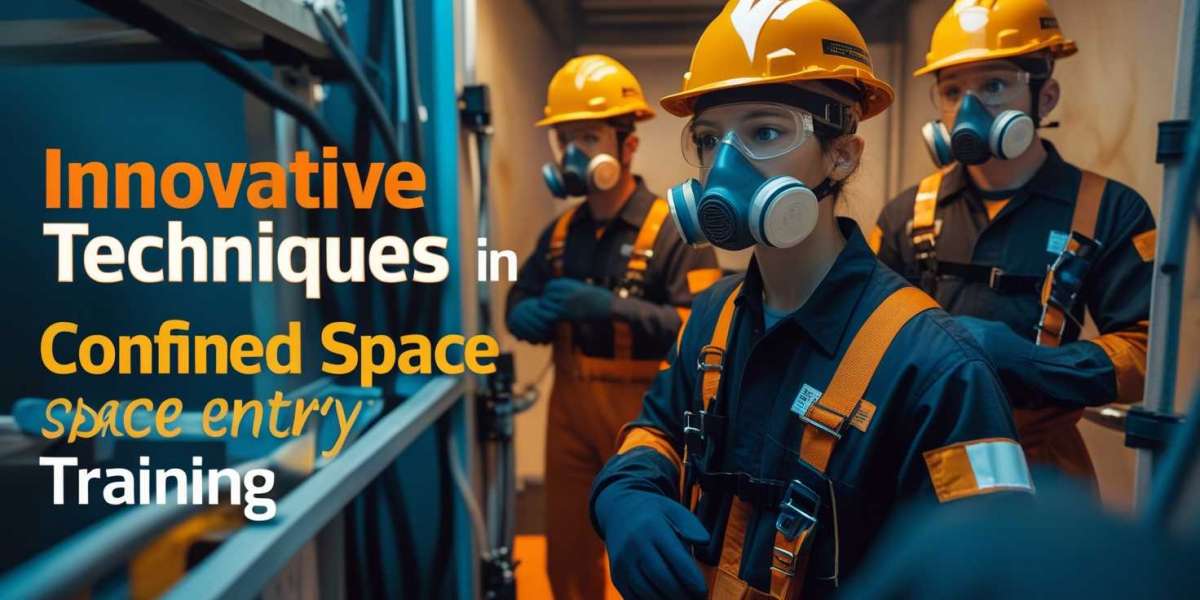Confined space entry is a critical aspect of workplace safety, especially in industries such as construction, manufacturing, and oil and gas. These environments pose unique risks, including hazardous atmospheres, limited entry and exit points, and restricted movement. Ensuring that workers are properly trained is essential to preventing accidents, injuries, and fatalities.
Traditional confined space entry training methods have primarily focused on classroom instruction, procedural manuals, and limited hands-on exercises. However, with technological advancements and evolving training methodologies, there are now more effective ways to train workers in confined space safety. This blog explores innovative techniques that are revolutionizing confined space entry training, enhancing learning retention, and improving workplace safety outcomes.
Virtual Reality (VR) Training
Immersive Learning Experiences
One of the most significant advancements in confined space entry training is the use of Virtual Reality (VR). VR-based training programs provide immersive simulations that allow workers to experience real-world scenarios in a controlled environment.
With VR headsets, trainees can navigate confined spaces, encounter potential hazards, and practice emergency responses. This method enhances retention by allowing workers to engage in hands-on experiences without exposing them to actual risks.
Realistic Scenario-Based Training
VR enables trainers to create highly realistic scenarios, such as gas leaks, structural collapses, or equipment malfunctions. These scenarios help workers practice critical decision-making skills and reinforce safety protocols.
Benefits of VR Training:
- Enhances engagement and learning retention
- Provides a safe and controlled training environment
- Allows for repetition and practice without additional risk
- Reduces overall training costs by minimizing physical resource usage
Augmented Reality (AR) Applications
Interactive On-the-Job Training
Augmented Reality (AR) is another cutting-edge technology that enhances confined space training. Unlike VR, which creates a fully immersive environment, AR overlays digital information in the real world through smart glasses or mobile devices.
AR can provide real-time guidance and instructions as workers navigate confined spaces. For example, an AR-equipped helmet can display safety checklists, hazard warnings, or step-by-step rescue procedures, improving situational awareness and decision-making.
Key Advantages of AR:
- Provides real-time safety information and alerts
- Enhances training retention with interactive learning
- Reduces reliance on traditional manuals and paper-based training materials
- Supports remote training and assistance
Gamification in Training Programs
Engaging Learning through Serious Games
Gamification involves incorporating game-like elements into training programs to make learning more engaging and effective. In confined space training, this can include:
- Simulated Challenges: Workers compete to complete safety procedures correctly.
- Reward-Based Learning: Points, badges, and leaderboards encourage participation and skill mastery.
- Scenario-Based Problem Solving: Workers face simulated emergencies that test their ability to make quick and informed decisions.
Benefits of Gamification:
- Increases motivation and engagement
- Encourages teamwork and collaboration
- Reinforces learning through repetition in a fun and interactive way
Robotics and Remote Monitoring Systems
Robotic-Assisted Training
Robotic technologies are playing an increasingly vital role in confined space training and operations. Robots equipped with cameras and sensors can be used to demonstrate how to inspect confined spaces safely before entry. Trainees can operate these robots to gain firsthand experience in assessing risks.
Remote Monitoring for Safety Training
Drones and robotic cameras can be utilized to monitor confined space training sessions, providing instructors with real-time feedback on trainee performance. This allows for more detailed assessments and targeted improvements in safety procedures.
Wearable Technology for Training and Safety
Smart Wearables for Data-Driven Training
Wearable technology, such as smart helmets, sensor-equipped vests, and biometric monitors, can enhance confined space training by tracking physiological data, environmental conditions, and worker movements.
Applications in Training:
- Real-Time Hazard Detection: Sensors detect changes in oxygen levels, temperature, and toxic gases.
- Biometric Monitoring: Measures trainee stress levels and fatigue to prevent overexertion.
- Motion Tracking: Helps instructors assess worker movements and posture to improve ergonomic training.
Artificial Intelligence (AI) and Machine Learning
AI-Powered Training Simulations
AI-driven training programs analyze worker performance and provide personalized feedback. AI can adapt training sessions based on individual learning progress, ensuring that workers receive tailored instruction.
Machine Learning for Safety Improvement
Machine learning algorithms analyze past incidents and near misses to improve confined space safety protocols. This data-driven approach enhances risk assessment and emergency preparedness.
Mixed Reality (MR) Training
Combining VR and AR for Hybrid Learning
Mixed Reality (MR) combines the best aspects of VR and AR, allowing trainees to interact with both real and digital elements simultaneously. For example, a worker could physically enter a training environment while seeing AR-generated hazard warnings and VR-based emergency simulations.
Advantages of MR in Confined Space Training:
- Offers a seamless blend of real-world and digital training elements
- Enhances hazard recognition skills
- Provides a more interactive and engaging learning experience
Mobile Learning and E-Learning Platforms
Remote and On-Demand Training
With the rise of mobile learning and e-learning platforms, workers can access confined space training materials anytime and anywhere. Interactive courses, video tutorials, and virtual simulations make training more accessible and convenient.
Advantages of Mobile Learning:
- Reduces training downtime
- Provides consistent and standardized training materials
- Enables self-paced learning
Conclusion
Innovative technologies such as VR, AR, AI, robotics, and wearable devices are transforming confined space entry training. These advancements provide safer, more engaging, and more effective training methods that significantly reduce workplace risks. As industries continue to embrace these technologies, the future of confined space training will be defined by interactive, data-driven, and immersive learning experiences.
By integrating these innovative techniques, organizations can enhance worker preparedness, minimize accidents, and create a safer working environment for everyone involved in confined space operations.
FAQ
1: What are confined spaces, and why is specialized training necessary for entry?
Confined spaces are areas that are not designed for continuous occupancy and have limited means of entry and exit, such as tanks, silos, or tunnels. Specialized training is crucial because these environments can pose serious health and safety risks, including exposure to harmful gases, lack of oxygen, and potential physical hazards. Training prepares workers to recognize these risks, use protective equipment properly, and implement safe entry and exit procedures.
2: What innovative techniques are being used in confined space entry training?
Innovative techniques include the use of virtual reality (VR) simulations, interactive training programs, and drone technology. VR simulations allow trainees to experience confined space scenarios in a controlled environment, enhancing their awareness without real-world risks. Interactive programs often use gamification to engage trainees more effectively, while drones can provide pre-entry assessments and inspections, ensuring safety and efficiency.
3: How do virtual simulations improve training outcomes for confined space entry?
Virtual simulations create immersive scenarios that replicate real-life confined space conditions. This hands-on experience helps trainees practice decision-making skills and emergency response without the dangers of actual confined spaces. By facing a variety of situations in a safe environment, trainees can build confidence and competence, leading to better preparedness when they encounter real confined space situations.
4: What role does technology play in monitoring compliance during training?
Technology, such as wearable devices and tracking software, plays a significant role in monitoring trainees' compliance with safety protocols during training. These devices can track movement, detect hazardous conditions, and record the trainee's actions. This data provides trainers with insights into each trainee's performance and highlights areas that need improvement, ensuring that future training sessions are more effective.
5: How can organizations ensure that their confined space training stays up-to-date with the latest techniques?
Organizations can stay up-to-date by continuously reviewing industry standards and best practices, collaborating with training providers, and participating in safety conferences and workshops. Engaging with professionals in the field can also provide insights into the latest tools and technologies. Regularly updating training materials and incorporating new techniques, such as VR and real-time monitoring, will ensure that workers are prepared for current challenges in confined space entry.







